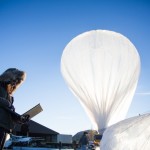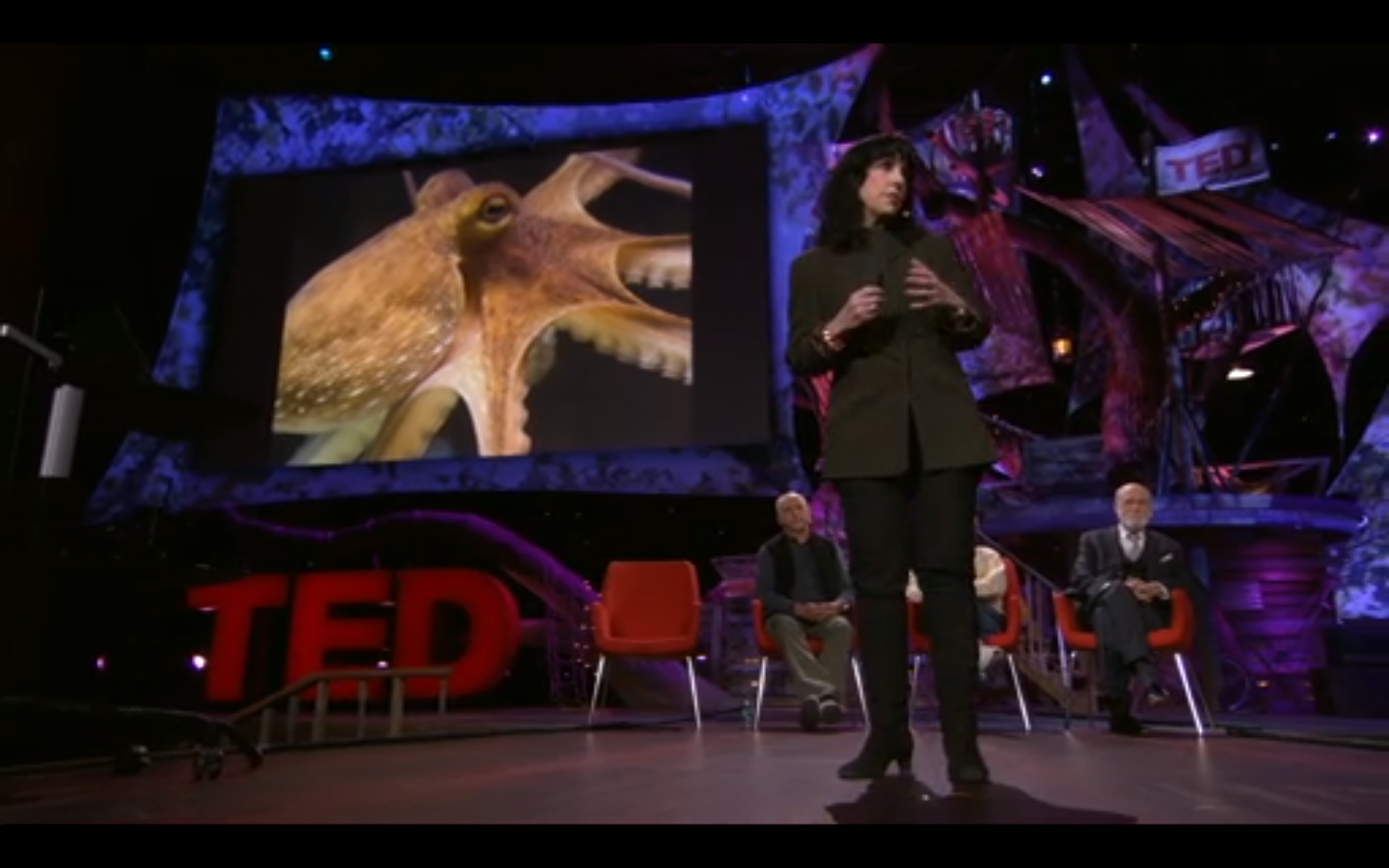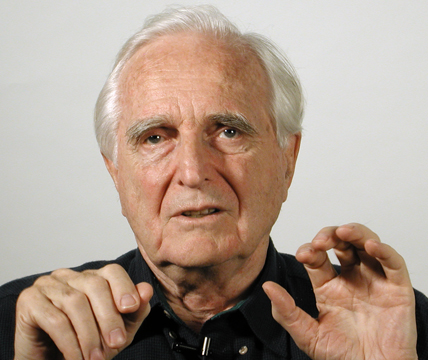 If you live in a city, you probably take the Internet for granted. It’s always on, everywhere you go. But for many people in sparsely populated areas, the Internet is out of reach. In this Wired article, Steven Levy describes how Google is experimenting with a system that delivers the Internet to these people using balloons.
If you live in a city, you probably take the Internet for granted. It’s always on, everywhere you go. But for many people in sparsely populated areas, the Internet is out of reach. In this Wired article, Steven Levy describes how Google is experimenting with a system that delivers the Internet to these people using balloons.
wired.com/business/2013/06/google_internet_balloons/all
Tag: Internet
T he Internet was conceived as a way of connecting computers, but its inventors quickly realized that the Internet was a way of connecting people. Now one of those founders, Vint Cerf, is working with Peter Gabriel, Diana Reiss, Neil Gershendfeild, and others to bring dolphins, bonobos, elephants, and other species into the Internet community. This TED talk gives us a peek at the early stages of a research project that could profoundly change our relationship with non-human inhabitants of our planet—and possibly other planets.
he Internet was conceived as a way of connecting computers, but its inventors quickly realized that the Internet was a way of connecting people. Now one of those founders, Vint Cerf, is working with Peter Gabriel, Diana Reiss, Neil Gershendfeild, and others to bring dolphins, bonobos, elephants, and other species into the Internet community. This TED talk gives us a peek at the early stages of a research project that could profoundly change our relationship with non-human inhabitants of our planet—and possibly other planets.
ted.com/talks/the_interspecies_internet_an_idea_in_progress.html
 If you’re reading this, take a moment to thank Doug Engelbart. At a time when computers were big, expensive, isolated, finicky, and terribly difficult to program and use, this unassuming genius had a vision of a digital future that was so far ahead of its time that few of his peers took it seriously. He is widely credited with inventing the mouse, but that’s just a tiny part of his grand vision. Graphical user interfaces, interactive computing, the Internet, and more, owe their existence at least in part to Engelbart’s visionary work. Thank you, Doug.
If you’re reading this, take a moment to thank Doug Engelbart. At a time when computers were big, expensive, isolated, finicky, and terribly difficult to program and use, this unassuming genius had a vision of a digital future that was so far ahead of its time that few of his peers took it seriously. He is widely credited with inventing the mouse, but that’s just a tiny part of his grand vision. Graphical user interfaces, interactive computing, the Internet, and more, owe their existence at least in part to Engelbart’s visionary work. Thank you, Doug.
http://www.nytimes.com/2013/07/04/technology/douglas-c-engelbart-inventor-of-the-computer-mouse-dies-at-88.html?pagewanted=1&_r=1&smid=tw-share
 When Apple released the iPhone, the world changed. People were carrying powerful computers in their pockets and purses. Developers released a bevy of creative apps to harness that always-available computing power. Today it’s hard to imagine a world without smart phones. Could Google Glass, the wear-on-your-face computer from Google, be the beginning of the next revolution in personal computing? This short NPR story explains how early adopters plan to use their prototype high-tech specs.
When Apple released the iPhone, the world changed. People were carrying powerful computers in their pockets and purses. Developers released a bevy of creative apps to harness that always-available computing power. Today it’s hard to imagine a world without smart phones. Could Google Glass, the wear-on-your-face computer from Google, be the beginning of the next revolution in personal computing? This short NPR story explains how early adopters plan to use their prototype high-tech specs.
npr.org/blogs/alltechconsidered/2013/04/17/177557810/Seeing-The-World-Through-Google-Colored-Glasses
Of course, not everyone views Google Glass through such rose-colored lenses. This Saturday Night Live skit mocks the idea that Google Glass can be used discreetly; other detractors question our need to become even more dependent on our technology.
mashable.com/2013/05/05/snl-google-glass-parody/
NPR’s Radiolab is radio at its best—entertaining, informative, provocative. This episode will change the way you think about time and speed. One segment reveals the surprising truth about the relative speeds of the human nervous system and the Internet, and the a critical role of speed in today’s computer-controlled financial marketplace.
radiolab.org/2013/feb/05
If you don’t understand how the stock market works, you’re not alone. The market has developed a digital mind of its own, and in many ways it’s beyond human comprehension. The blog that accompanies that story includes some dazzling animated visualizations.
While you’re learning a language you can help with the world’s biggest translation project. This Wired article explains how Duolingo hopes to translate the whole Internet into a resource without language barriers.
wired.com/business/2012/09/translate-the-web
The Internet teems with data waiting to be analyzed by companies, government, and savvy individuals. Big data has become an industry buzzword as more businesses and governments find ways to tap into the mountains of data our digital devices produce every day. Photographer Rick Smolan’s latest project is to make big data—and its impact on us—visible. This Huffington Post article describes this crowdsourced work of art and includes a direct link to The Human Face of Big Data.
huffingtonpost.com/2012/09/25/rick-smolan-the-human-face-of-big-data_n_1912641.html
The original Internet was designed to link people together using computers and networks. Today’s Internet has an exploding population of non-human connections that are changing the way our high-tech world works. This Huffington Post blog explains the basics of the Internet of Things (IoT).
huffingtonpost.com/w-david-stephenson/internet-of-things-mystery_b_1870659.html
ted.com/talks/don_tapscott_four_principles_for_the_open_world_1.html
It’s easy to get lost in the details of our increasingly netcentric lives and forget about the big picture. In this inspiring TED talk, Don Tapscott explains with concrete examples and beautiful analogies how the Internet is helping create a new age of openness and collective intelligence.
npr.org/blogs/alltechconsidered/2012/06/06/154430791/ipv6-a-new-internet-expands-the-web-by-trillions-of-addresses
You probably didn’t notice, but the Internet just got bigger. A behind-the-scene change dramatically increases the number of possible Internet addresses, making it possible for all kinds of devices to stake out a space on the net. This NPR story explains the change and what it means to you.